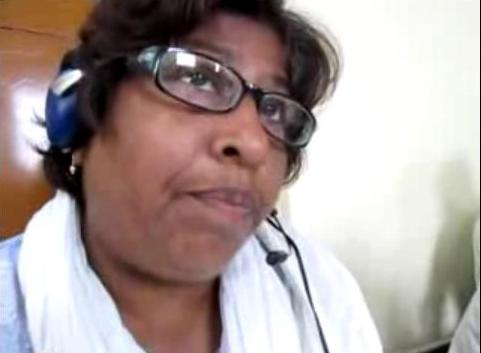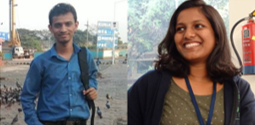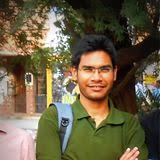An Interview with Rajni Tilak
Neel Kranti Media
(First published in the Dalit students’ magazine ‘Insight Young Voices’ in 2005)
Rajni Tilak is Executive Director of Centre for Alternative Dalit Media (CADAM) and Founder Member of NACDOR. She is one of the prominent Dalit rights activists and India’s leading voice of Dalit feminism as well. The interview was conducted by Moggallan Bharati.

To begin with, please tell us about your family background.
I was born in old Delhi, on 27th May, 1958 in a family having very limited means. I came from a family that was badly and wholly oppressed by Hinduism. My father was a tailor whose ancestors migrated to Delhi from UP to earn a steady source of livelihood. With all the then-persisting problems my parents gave the best education to all seven of us siblings – four boys and three girls. But because of severe poverty our higher education got shattered, especially mine – being the eldest girl in the family I had to take care of my younger brothers and sisters. Once I aspired to become a nurse but ultimately I had to change track due to the absence of appropriate financial support.
After passing my higher secondary exam (1975), I joined ITI’s cutting and tailoring course at Curzon Road. Since, I was looking for some skill development in order to feed my family, I also joined a stenography course at the Shahdara ITI. During those days, along with other like-minded friends, I organized a union for girls, since the girls were discriminated on many grounds over there, especially those who were from deprived sections. There was the problem of their scholarships, separate sanitation was not available and they lacked confidence while dealing with others. After some time I merged our union with the vibrant left organization of the time – PSU (Progressive Students’ Union). Later on, we split with them because of some political and ideological problems. The Left in the name of student mobilization was focusing more on their own agendas for strengthening their political parties and the core issues like casteism and other problems of students from deprived sections were not taken seriously.
How did you get initiated into the Dalit Movement?
Right after my disenchantment with the left, I came to realize my Dalit consciousness and also that the Left is not seriously regarding the core problem erupting out of caste discrimination. Then I started reading Ambedkar, Chandrika Prasad Jigyasoo, Mary Taylor, Gandhi, Rahul Sankrityayan and a lot of other authors. When I got in touch with the Dalit movement, I found that it was at another extreme.
While the Left was completely focusing on economic problems, the Dalit movement was focusing only on problems of caste by completely ignoring the problems of patriarchy that is prevalent among the Dalits. I started building my organization allying with Bharathiya Dalit Panthers in Delhi (1982). Some of us also started a Dalit theatre group called ‘Ahahwan’, and a students’ awareness programme by establishing a Youth Study Circle. During the 1980s, I also worked with anganwadi workers and formed a union of anganwadi helpers and workers at the national level to demand regular pay scale. In this union we had mobilized and organized about 4,000 women, but since we lacked any experience to deal with such a big organization it was soon co-opted by the Congress.
You are one of the leading Dalit voices in the feminist movement. Could you please tell us about your experiences with the feminist movement?
During the infamous Mathura Rape Scandal (1972), I along with my co-workers organized a huge agitation all over Delhi, which we later on converted into a successful women’s liberation movement. Thereby, I got in touch with ‘Saheli’, an autonomous women’s group. Since the activists of Saheli were working in many fields like sanitation, health, counseling for family planning, providing shelter for deprived sections, campaign against dowry, eve-teasing, rape, molestation etc, I benefited immensely from my experience with Saheli. I learned how to work with fewer people more intensively and constructively.
However, I also realized that the approach of such feminist movement is not towards the central problem of women in the villages, slums and other backward regions of our country. The standards of so-called mainstream feminist movement was restricted to a certain class of women who while enjoying their social status (economic independence and upper-caste identities) were not prioritizing the core issues related to the problems of lower caste women. I perceived that the problem lies in the leadership of the feminist movement which was in the hands of those women who were already socially liberated.
Could you explain the difference and similarities between the Dalit feminist movement and “mainstream” feminist movement?
We can see the differences in the background of both the movements and also in the approach, priorities, agendas and philosophy of both of them. While the Dalit feminist movement has its ideal figures like Savitri Bai Phule, Ambedkar and Jyotiba Phule, there is a complete absence of any pronounced ideal in the mainstream feminist movement. As far as the similarities are concerned, it is true that the women of every community are equally suppressed by patriarchy. Patriarchy dominates caste and class everywhere. It is true that, to a great extent, Dalit women are more affected by patriarchy, and it is also not false that upper-caste women are fighting against the injustices done by patriarchy.
Could you throw some light on the contemporary Dalit feminist movement?
Nowadays the Dalit feminist movement is quite weak. Although we have 15 or 20 strong Dalit women leaders working in different parts of India, I still feel it is not enough. The Dalit feminist movement lacks a strong structured organization, to direct the movement more rigorously. I perceive Dalit feminist leaders more as playing a subordinate role to other movements instead of leading them on their own.
Today we have a network of Dalit women which is called the National Federation of Dalit Women (NFDW). Through this network, sensitization of other Dalit organizations is pursued for the empowerment of Dalit women in the Dalit movement as leaders. NFDW is bringing a new front into focus – the front which is really fighting for women’s emancipation at the grassroots level.
To put it more concretely, CADAM (foundedin 1995) has played a greater role in establishing Bharatiya Mahila Andolan. Since 1995, CADAM organizes Indian Women’s Day, every year, for the promotion of women’s rights on March 10, the death anniversary of the first women leader of India, Savitri Bai Phule. CADAM also organizes ‘Education Day’ to commemorate the birth anniversary of Savitri Bai Phule. We are also able to develop a vast network through which we are able to train many Dalit women.
What is required to mobilize Dalit women to actively participate in the movement?
To bring Dalit women into the feminist movement it is required to first sensitize them about their being human and thereby induce them to participate at the local level; to participate in decision-making processes. Only then will they be able to lead others. It is a lengthy process. Normally they have lots of family burdens on their shoulders which makes it difficult for them to take an active part in such activities. But somewhere they have to realize that they too are human and have equal rights to lead a dignified life. I am very hopeful that given the situation, Dalit women will be the ones who will participate in large numbers and lead the movement to its logical conclusion.
Why is it that Dalit girls, especially those in higher education, do not join the feminist movement for their own cause?
I think it is because of the Dalit community’s patriarchal nature. There is a very little mobility for Dalit women. Child marriages are still in practice. Those girls who are getting into higher education lack confidence in themselves. It is due to the patriarchal society and also because of lack of exposure and the constant pressure from their families to avoid contact with others.
What are your views on the Women’s Reservation Bill?
We have already done a signature campaign among Dalit women across the country regarding their concerns about the Bill. We have also campaigned among MPs of different parties. We met the PM in order to explain that it is very pertinent and urgent to involve Dalit women, minority women and OBC women to make this Bill feasible otherwise this Bill is going to be another instrument in the hands of the state to oppress.
Are you satisfied with the progress made by the Dalit feminist movement so far?
Of course, I am satisfied. After all in the last 50 years we have carved our own niche. At least people listen to us now. It is we who have really faced the problems and oppression in Indian society. We know what are the basic necessities and demands of women. I am very optimistic regarding the Dalit feminist movement and I hope a day will come, when every single girl of this nation will realize her potential.
But it is also true that despite making our voice stronger, we are also lacking a collective programme, generally in the Dalit movement, and particularly in the Dalit feminist movement. We require a constructive and concrete programme to at least provide a deeper foundation. By adding to the works of Jyotiba, Savitri Bai Phule and Ambedkar our organization can strengthen its roots.
The Dalit movement’s aim earlier was to fight Brahmanism, capitalism and patriarchy. Our movement is now concerned with urban problems and thereby is restricting itself to employment and reservation. Such an approach can only empower an individual, but it cannot benefit the larger masses of this country. Therefore there is an urgency to redefine the goals and aims of the Dalit movement keeping in view the ideals propagated by our icons. I feel that there is an urgent need to build collective leadership which is visibly the greatest weakness of the Dalit Movement.
~~~
Image courtesy: Nikhil Sablania, Ambedkar Times Channel.
[Courtesy: INSIGHT, March-April 2005]









